Savage Arms enjoys a solid reputation for making affordable, yet highly accurate bolt-action rifles. As you’ve probably caught wind of by now, they’re about to release their first line of modern sporting rifles (ARs). Dubbed the MSR, cleverly short for Modern Savage Rifle, they’ll be available in three different calibers in four different rifle styles. TTAG has the full scoop and lots of photos to share…
The MSR 15 Patrol is Savage’s entry-level AR-15 with an MSRP of $849. It’s fully-loaded with features and specifications you wouldn’t expect at this price.
Unknown to many, Savage has been manufacturing AR barrels for other companies for a long time. When it came to their own MSRs it looks like they pulled no punches. Even the base model Patrol here sports a .223 Wylde chamber, 1:8 twist 5R rifling, Melonite QPQ finish on 4140 steel, a mid-length gas system, and “Savage’s trademark zero-tolerance headspace control.” Mating into that is a carpenter 158 bolt on an M16 carrier.
Moving to the outside, it’s BLACKHAWK! furniture all around.
The MSR 15 Recon carries an MSRP of $999 and receives various upgrades from the Patrol. Most notable are the custom-machined lower receiver, free float M-LOK handguard with flip-up front sight, and BLACKHAWK! AR Blaze trigger.
Savage will offer two MSR 10 rifle variants providing .308 and 6.5 Creedmoor firepower. Above is the MSR 10 Hunter, which is a short and lightweight configuration with an MSRP if $1,481. In .308, it sports a 16 1/8″ fluted barrel and weighs 7.8 lbs, while in 6.5 Creedmoor it gets an 18″ barrel and weighs 8 lbs. Like the MSR 15s, the barrel is Melonite QPQ’d 4140 steel with 5R rifling. The MSR 10 Hunters have an adjustable gas block at the end of a Mid+ length tube.
Upper and lower are custom-forged from 7075-T6 aluminum and hard coat anodized. Inside that upper is an E9310 high-pressure-tested bolt with dual ejectors. The carrier and charging handle are Savage’s own, as is the forend, which Savage says locks so tightly to the upper receiver that a scope mount can span from receiver to forend with no degradation in accuracy.
The star of Savage’s MSR show, though, is probably the MSR 10 Long Range. MSRP here is $2,284 and for that price Savage adds a Magpul PRS Gen3 stock, a BLACKHAWK! AR Blaze 2-stage trigger, a rifle-length+ adjustable gas system, and a side charging upper receiver with non-reciprocating charging handle. Barrel length is 20″ in .308 and 22″ in 6.5 Creedmoor, weighing 9.75 and 10 lbs respectively.
Given Savage’s reputation for accuracy and their assurances of paying extremely close attention to barrel and headspace tolerances in the MSR line, we’re certainly excited to put these rifles through their paces. Both the MSR 15 and MSR 10 lines hold a lot of promise on paper and look to offer an extremely solid value for the dollar. Next stop, SHOT Show.


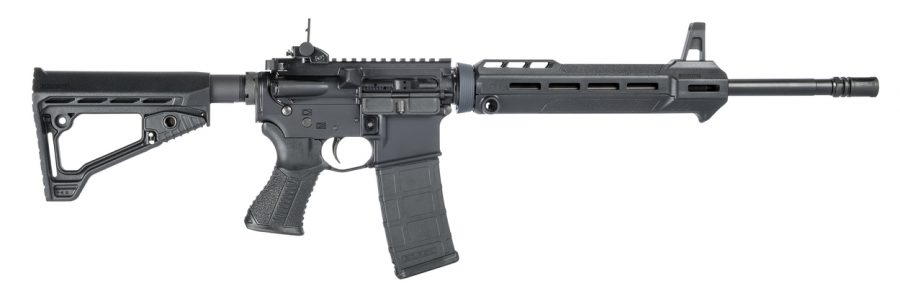

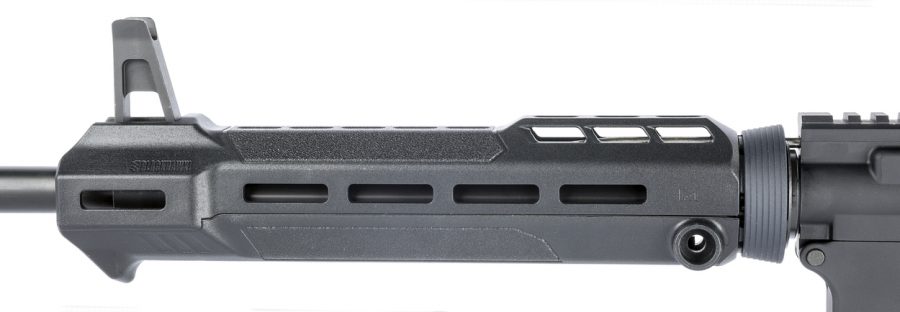
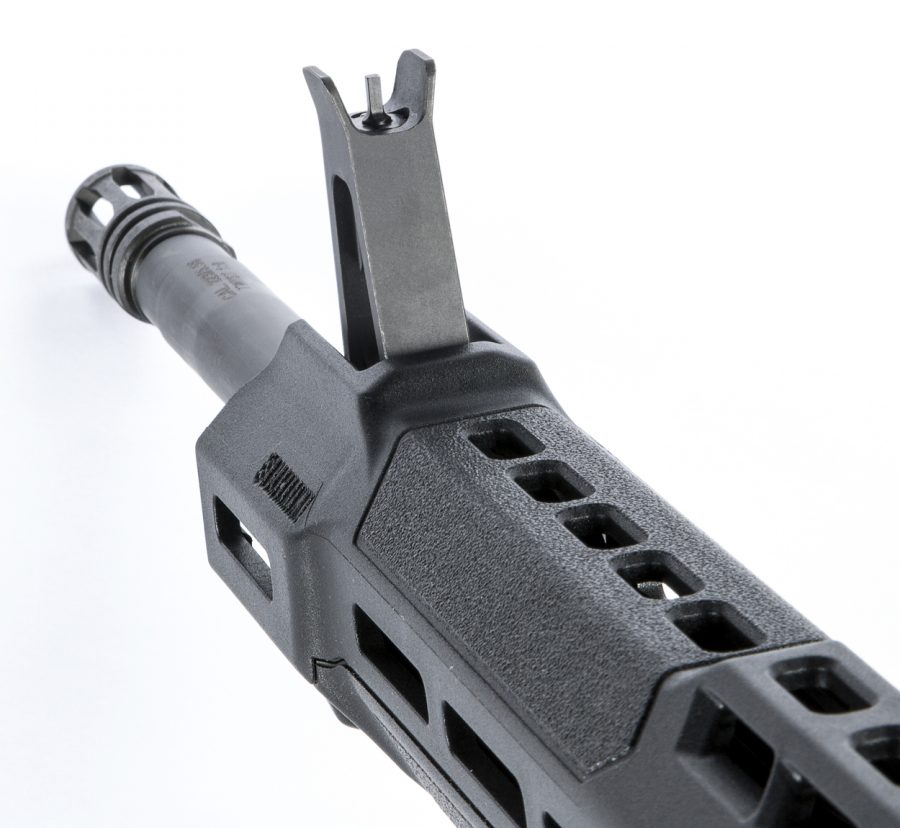
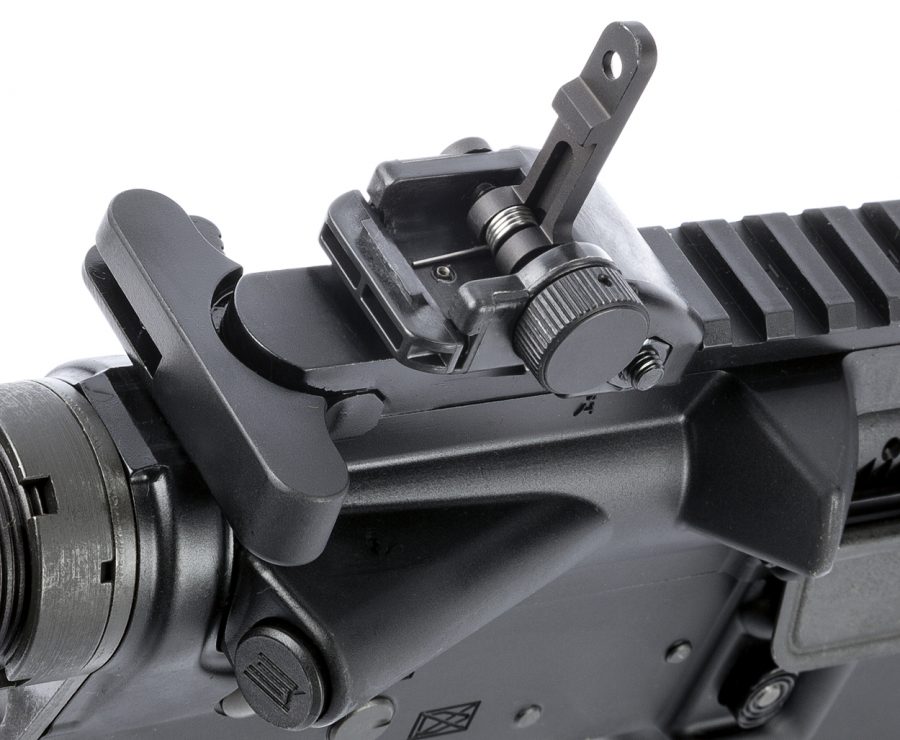
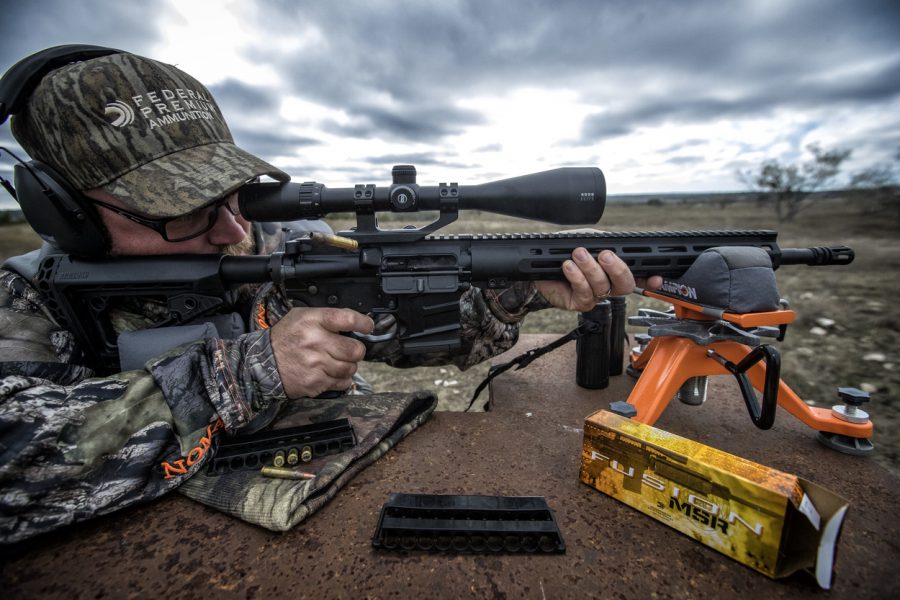
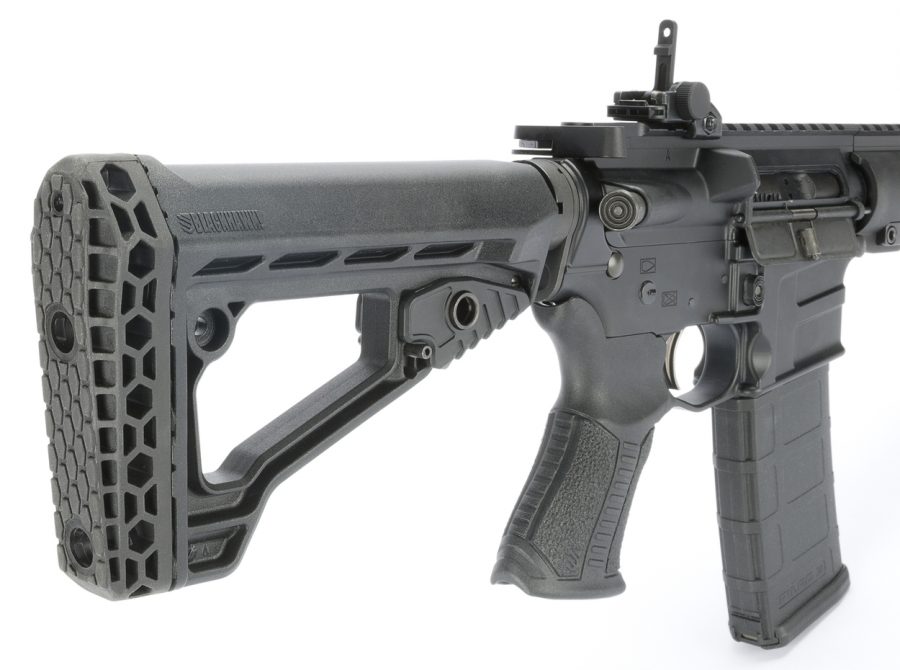
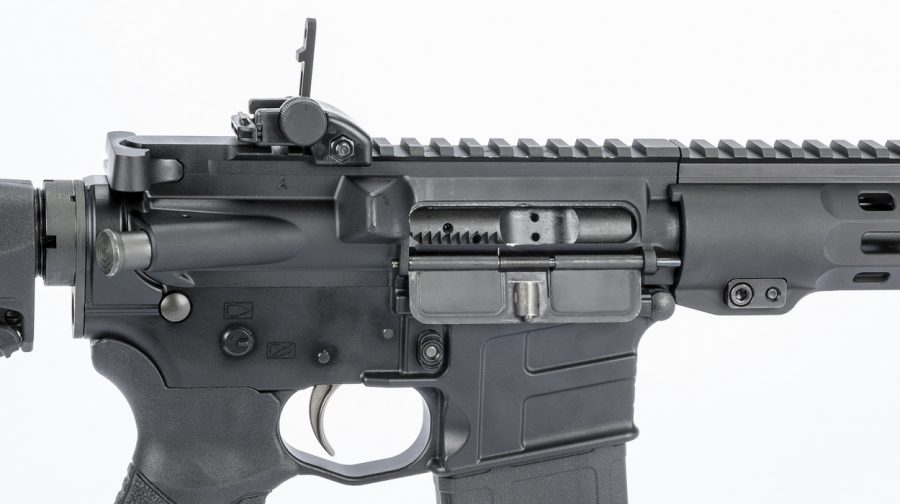

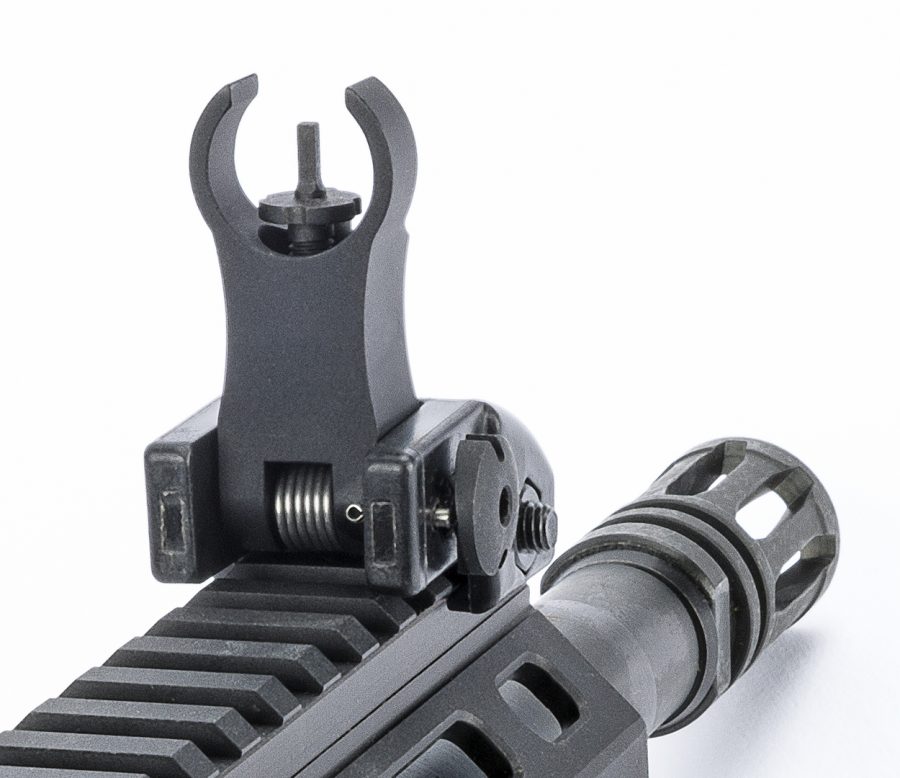

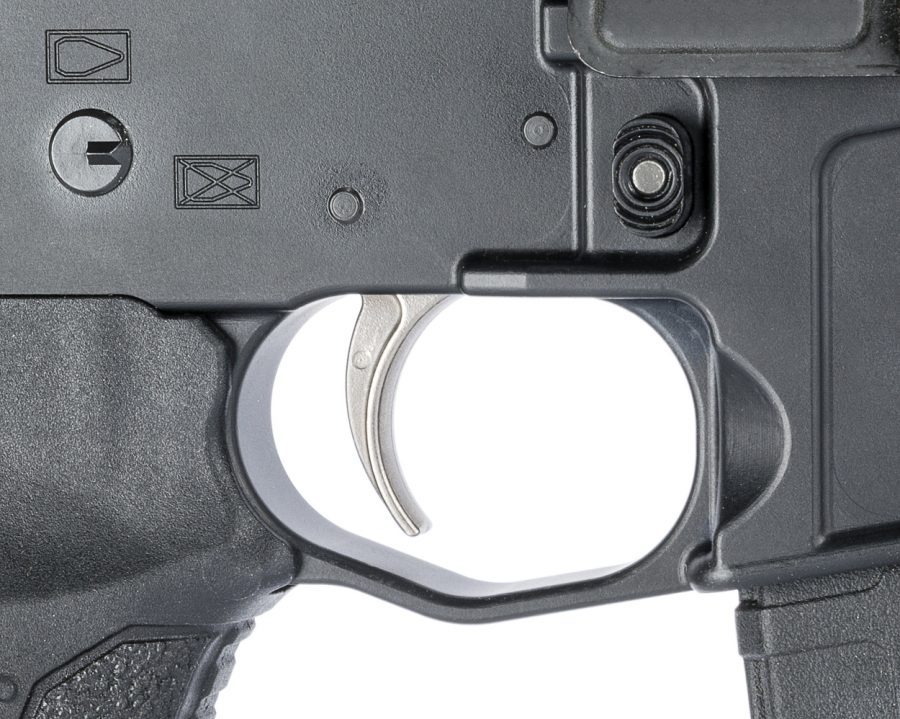



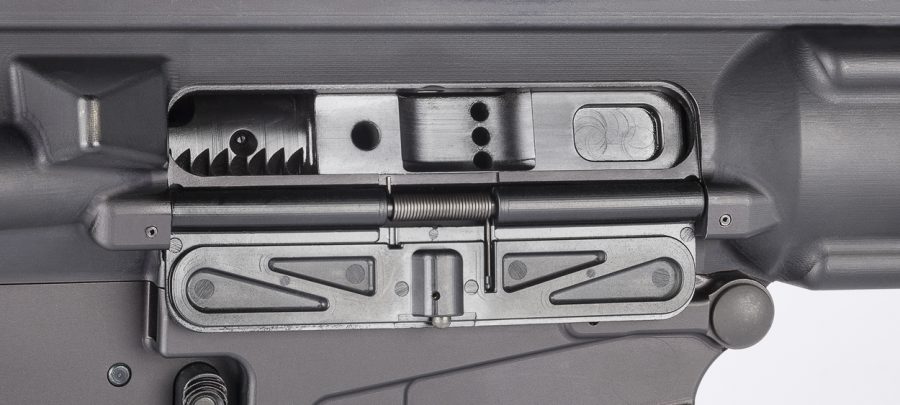



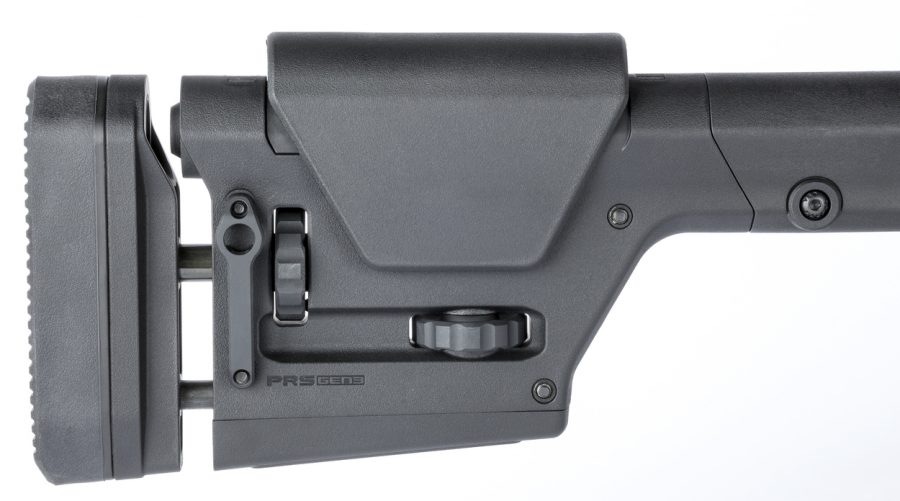
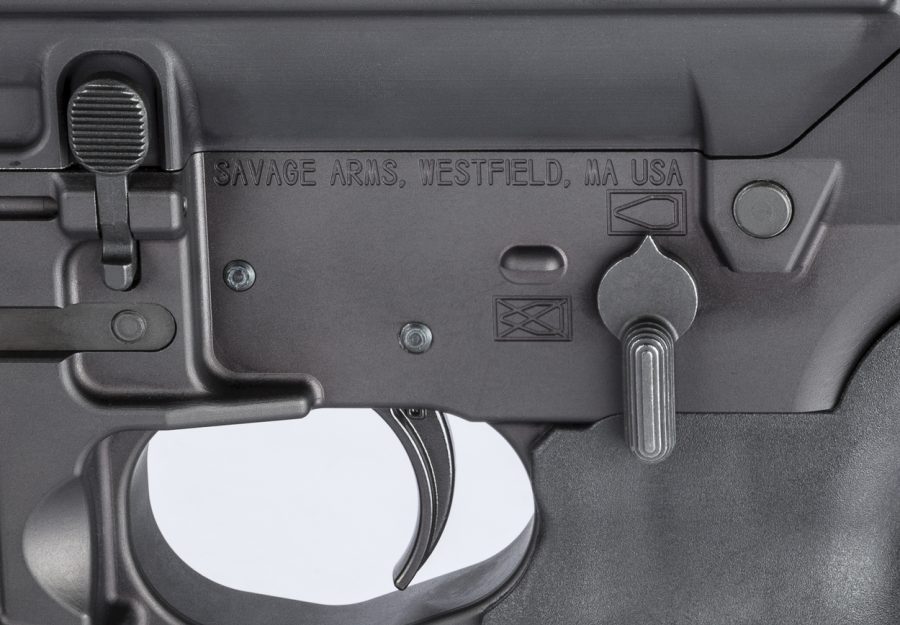



“Mating into that is a carpenter 158 bolt on an M16 carrier.” – Well that is a disappointment. We’ve come a long way since the 1950’s. The use of Carpenter 158 raises the price when better steels exist.
Agreed. I wish these companies would innovate instead of be lazy.
Man that’s so cool. I want an AR now. This has got to be the best. I’m gonna get one and take some pics with it in my apartment. Then write a cool story on my blog about it being the greatest AR ever.
Then sell it.
Do you prefer 9310? That’s the only cheaper bolt material I know of that is widely used.
Allegedly both are in the actual military specs as being acceptable. There is some debate as to which is superior, with some folks saying it’s the 158 because it’s more flexible and therefore less brittle and some saying 9310 because it’s stronger or stronger at high temperatures or whatever. I’m sure there are tons of grades of steel that would serve the purpose perfectly well, though.
Frankly, since most of the major manufacturers (and I’m talking like Microbest, AO Precision, Continental Machine Tool Co, Toolcraft….the ones that actually make these parts and sell them to most of the OEM brands) mostly produce 158 bolts, it’s probably cheaper than going with something less standard even if, technically, the raw material should be less expensive.
As someone who occasionally buys large bars of the stuff to turn into bolts, its the other way around. The carpenter is more expensive than the 9310 and always has a longer wait. It’s the true Stoner spec. But I’d take the harder and more heat resistant 9310 any day.
I gotcha, but are you confident that’s the case for a company making 12,000+ bolts a week? I could see them spending less for the 158 simply due to economies of scale and the fact that 90% of their bolts are made from it. It’s probably the reason you have to wait on it while 9310 is in stock 😉
Better how?
Something like a rifle bolt has several conflicting requirements. Satisfying all these requirements is a balancing act. Price is one of those requirements, as are durability, machinability, hardness, wear resistance, corrosion resistance, heat resistance, etc.
9310 steel was around when Stoner (or Colt) spec’ed Carpenter 158 – ie, it was available in the 50’s. So was the previous case-hardened steel, 8620, which has been used in firearms for over 100 years – ie, before it even was “8620” AISI steel.
If you want better steel in a AR BCG today, you can have it. There are better steels than either 9310 or 158 for this type of application. They’ll cost you more, and they might cost more to machine and heat treat – but they’ll have tensile strength and toughness that will out-spec either of the aforementioned case-hardened bearing/mold steels.
The reason why 158 costs more is that a) there’s a single supplier, and b) it is a “strategic material.” 9310 is shipped in large quantities into the US by the ChiComs all the time, so there’s a lower price for it – if you like the idea of ChiCom steel in a critical application, that is.
In the end, I’d rather have a slightly less superior steel used in firearms parts that are perfectly executed than sit there playing mental masturbation games with steel spec sheets. I’m going to wager I’ve seen a few more problems in firearms than most, and most of the problems I see in receivers and bolts are the result of poor machining (or design) practices and/or poor heat treatment – not metallurgy. Machining that leaves stress points in the execution of a bolt will get you problems, as will poor and (especially) inconsistent heat treatment.
The Recon 15 looks like a good deal, if the quality is there.
Ironically, all built in a state where they can’t be sold. Just like mine. Sigh.
Just a side note : This is exactly the type of EBR ( evil black rifle ) that the Pittsburgh Presbytery is calling on Pennsylvania lawmakers to BAN .——– At the State level ….. they NEVER stop.
See , Firearm Owners Against Crime .
https://foac-pac.org/Pittsburgh-Presbytery-Calls-For-State-Ban-On-Assault-Rifles/News-Item/6064
While the PA game commission reviews the use of semi auto for hunting, that may include these. That was just recently passed and signed into law. I’m holding out on my next purchase to see what they (game commission) come up with.
Nothing says quality all around like 4140 barrels. Thanks for cheaping on the important parts, Savage.
The DoD destructive tested barrels, firing them until they ruptured, and found that 4150 holds up to 100-ish degrees higher temp than 4140. Is this difference truly that important to you? BTW the Melonite (nitriding) process creates an extremely hard surface and lowers friction without meaningfully affecting tolerances. I’d take it over chrome lining all day every day even if, again, it’s slightly poorer suited for sustained full-auto fire as, ultimately, it will fail at a slightly lower temperature.
Basically, if you’re truly concerned about 4140 vs 4150 you’re barking up the wrong tree by considering a consumer AR-15 in the first place. You may want to consider an M249 or something. Or you can get an M4gery from plenty of companies pushing the “built to military specifications” sales pitch for those who eat that stuff up.
4140 barrel quality steel is used in both AR-15 barrels as well as the most accurate barrels made for benchrest and F-class shooters.
There’s absolutely nothing wrong with 4140.
The stainless steels used in barrel making might be 410, 416, or 420 stainless steel.
4150 steel’s only difference from 4140 is an additional 10 points (on average) carbon. That is, unless we’re talking about 4150-CMV steel, or the MIL-spec steel for M4 barrels, which is a chromium-moly-vanadium steel. That’s different – it isn’t straight-up AISI 4150 steel.
Again, I’d rather focus on the quality of execution of drilling, reaming, rifling and lapping a barrel, than sit around arguing about which alloy has better specs on paper or in some acceptance test. In other words, if someone is offering me two barrels for free – one is a Krieger, made of 4140, and one is a M4 “mil-spec” barrel made of 4150-CMV, I know which one I’m grabbing as fast as I can, and it isn’t the one with a military contract number on it.
Here is a man that knows what he is talking about. All these steel experts here…….
Honestly, if I’m going to pay $2500 for a .308 target rifle, I’m going to get it custom built to spec. Actually, I did exactly that…
According to the write-up the MSRP of the long range MSR is $2,284. Street price is around $1,900 if memory serves me correct, according to the JoeBob’s link they posted on this new line of firearms that got deleted last week.
Well yeah but bringing reasoning in here doesn’t allow him to poop on their new product so good luck getting the synapses to fire over there.
Yeah… Because who wouldn’t want a .308 precision rifle with a proprietary muzzle device, and a trigger from a company that has no business making triggers?
The main differences between my rifle and this thing are…
1. I have a much better barrel.
2. I don’t have a useless side charging system that invites yet more shit to go wrong.
3. I have a Timney match trigger rather than some abomination from a company known primarily for making tactical nylon.
4. A muzzle device that will let me mount a can on it.
Add to that the fact that the rifle doesn’t even have BUIS…
I’ll be really curious to see how these .223 rifles compare to the Springfield Saint. I actually have yet to purchase an AR of my own (I’m only 21 and don’t have a ton of discretionary income), but I’ll probably be acquiring one of those two before too long.
The MSR Recon and Springfield Saint look really similar, spec. wise.
MSR Patrol, really (polymer handguard, A2 front sight post, standard mil-spec-style lower). The barrel on the Savage sounds very appealing. It could definitely surpass the SAINT on the accuracy front with its Wylde chamber and 5R rifling. On paper the rest of the Patrol reads pretty darn similarly, except for the straight-up mil-spec trigger whereas the trigger in the Recon is extremely similar to what the SAINT has (but the Recon’s lower receiver and free-float handguard can be considered upgrades vs. the SAINT, but at a $100 higher MSRP. Whereas the Recon’s MSRP is actually $50 less than the SAINT’s). They’re stiff competition, for sure.
Join the military, they will give you one to have and to hold until death do you part. Frankly speaking as a Vietnam combat vet, speaking from experience, the AR platform is very inferior to the AK platform. For one the AR has gas impingement on the bolt face which carbons up and jams it. The AK uses a gas piston. The AR requires special knowledge and tools to completely strip and clean and or repair it. The AK can be completely stripped and repaired by a relatively uneducated soldier in the field without special tools. The AR is fragile and sensitive to dirt, the AK is robust and can be thrown in the mud for 2 weeks, picked up and knock off the bigger pieces and fire it. The AK can be machined or stamped parts. It is considerably less difficult to manufacture and maintain. Kalishnikov designed a battle rifle that is currently in use around the world, our military must endure an inferior weapon primarily due to political ramifications.
The shortcomings of the M16 in Vietnam had more to do with the flaws in initial implementation than any issues with the design. DI guns aren’t nearly as dirty as people claim, and don’t have significantly more malfunctions than AKs when using modern components and ammunition. Oh, and if you have carbon building up on your bolt face, you have something very wrong with either your rifle or your ammo.
I’ve never had a hard jam on an AR platform despite using one for almost 20 years now. AR failures tend to be very easy to clear. AK failures are less frequent, true, but they do happen and often cause the rifle to require tools to get back into action.
Both platforms, in their modern incarnations, are very reliable systems. I own examples of both, and would be comfortable using either one as my primary weapon in a nasty situation. The only reason the AR edges out the AK, in my opinion, is the greater flexibility in after market components and sumplementary equipment. (For example mounting a VFG on an AK is not a trivial exercise due to the clearance necessary to rock in the magazine.)
@william wessels – no offense but your thinking is very old and outdated. Comparing a modern day AR platform rifle to the one you were issued in Vietnam is incorrect. The M16A2 I was issued in the late 80’s and early 90’s was a completely different rifle as well. Today, with a respected manufacturer utilizing the improvements made with materials and manufacturing along the way, I’d put an AR made today up against an an AKM or any AK variant in a reliability test. They would absolutely compare equally if not a slight advantage to the AR.
I was once an AK disciple myself, for many years.
I had about 1,000 rounds through my S&W M&P 15 Sport before I took the bolt carrier group apart and cleaned the bolt and inside of the carrier. The firing pin was actually still clean and shiny. That said, I did clean the exterior of the BCG, bolt face, the barrel, and interior of the receivers after most shooting sessions, and lubed them up nicely after cleaning. I would also spray cleaner as best as I could into the BCG through the bolt face and through the cam lock opening (without taking anything out) so that probably helped keep it cleaner compared to absolutely no cleaning efforts of the BCG. I don’t have any specialized tools but I keep my ARs running just fine. That said, I only shoot in the woods and at the range, and I don’t drop them in mud, so I can’t compare that aspect of their reliability to an AK. I do admittedly baby my rifles and don’t throw them around.
I do agree that, based on what I’ve read (since I wasn’t alive during Vietnam) the M-16s issued for Vietnam were problematic, so I can understand your hesitation to get on the AR bandwagon.
> DI guns aren’t nearly as dirty as people claim, and don’t have significantly more malfunctions than AKs when using modern components and ammunition.
The flaws of AR design are not to do with DI itself, but rather the overall receiver arrangement. Too much surface contact between the bolt carrier and the inside of the receiver, and with tight tolerances to boot. If you get dirt in there, it doesn’t really have anywhere to go other than in the way of the bolt carrier, increasing friction.
AK, in contrast, has this huge cavernous receiver, in which the bolt carrier rides on rails. If you get dirt inside of that, even if it lands on the rails, it will just get pushed aside as the rifle cycles. On top of that, you get those wide tolerances between parts that can accommodate quite a bit of obstruction.
There are other things, like the much simpler (and practically fail-proof) ejector design of the AK, or the beefier locking system. But I would say that the receiver/BCG interface is responsible for 90% of the difference in reliability.
> AK failures are less frequent, true, but they do happen and often cause the rifle to require tools to get back into action.
What could you possibly do to an AK to make it fail in such a way that requires tools to get into the action to unfvck the rifle?
Don’t forget that the AR is a sealed system. It is very hard to get dirt into it in the first place.
As for AKs going down… I’ve seen some doozies. The nastiest one was a failure of pins in the fire control group to remain in place that would up turning my WASR into a machine gun. The little wire holding the fire control group in place snapped. The AK relies too much on that one wire to keep everything aligned. If it goes, you have a paperweight.
Why did your post about these guns get deleted/ removed last week? Did Savage lawyers call TTAG?
Savage asked nicely — precisely zero lawyers involved haha — and we agreed to take it down. It was an accidental leak when the products went live on that retailer’s website and it was not supposed to happen. The retailer had it taken down almost immediately and the only other place the news got out was here on TTAG. As they didn’t want the product announced anywhere until today and the timing was so soon after that leak anyway, we took the post down and postponed until this one (which has way more photos and info to go with it). Savage will be putting all the info on their website tomorrow.
Ha, fair enough. I do appreciate the higher res. photos of this post. I liked seeing the “street price” of the original post.
no forward assist, ugly furniture and at a price point where you can build a product superior in every way. No thanks
No forward assist is a feature not a bug.
I think only the Patrol appears to lack a forward assist (has a plug there instead). The rest of the models look to have a functional forward assist.
Regardless, at a street price of around $699 it’s a very solid value. You can certainly build something similar for about the same price or less, but a lot of consumers will choose a factory rifle instead for lots of obvious reasons like warranty and resale value. To me, the biggest value in the MSR 15 is the .223 Wylde 1:8 twist 5R melonited barrel w/ mid-length gas system. Could be awesome on the range and I doubt a budget-oriented home build would match those barrel features.
When Eugene Stoner designed the AR platform it did not have a forward assist and the weapon functioned fine without it. The military “powers to be” requested a forward assist be installed. Currently, the Savage Patrol, due to customer demand, the rifle comes with the forward assist installed. I spent twenty-two years in the U.S. Army, Vietnam Vet, and never used the forward assist on my weapon. I opine that Savage was splitting the difference by installing the dust cover and the forward assist to be an optional add-on. This was by design to keep the entry-level rifle at an acceptable price point. Again, the rifles are now being shipped with the forward assist with no increase in price. I own the Savage Patrol and the Springfield Saint. The rifles are great for my use profile having run about 1500-2000 rounds through each with no failures. Savage started building rifles around 1894 and they are still here. Springfield is a reputable organization and do a great job with their product line also.
With a scope, I really like that side charging handle, do they work on other ARs, does anyone know? I could use one in 5.56 form and another in 7.62.
There are a couple of sort of weird, aftermarket bolt-in adapters that turn a normal upper into a side charger (e.g. this one), but for the most part you’re talking about switching to a new upper receiver. Gibbz, X-Products (2 designs from them), and others make side charging uppers that can be purchased separately.
Side Charging Uppers seem to fall into two categories:
1) Those that use a custom BCG with a slot cut in the receiver so a reciprocating handle can be screwed into the BCG.
2) those that have their own integrated charging handle and use standard BCG.
Of the two types I much prefer the second that use standard BCGs. I like to try to avoid proprietary parts where I can for future maintenance or repairs.
One that has really caught my eye is the GIBBZ Arms’ G4 uppers. MSRP of $250 and a non-reciprocating handle. Seems pretty slick and works with standard BCGs, though it requires a custom cam pin (included but extras are $11.50). And I believe they make them in right or left handed.
Another that is similar is XProduct’s X-15 SCU (they of the Can Cannon uppers). Similar features but less option on ejection side.
X-Products makes two versions, with the primary difference being on the ejection side (one is standard M4-style w/ dust cover, case deflector, and forward assist, while the other has no dust cover and has a section of Pic rail bolted in place of the normal forward assist and deflector so it can be swapped for other things or stuff can be bolted to that rail)…
That BLACKHAWK! furniture is utterly BARFTASTIC!
I see a side-charger which isn’t mentioned (unless I missed it) and it ALSO has a standard charging handle too? I’m only familiar with old fashioned AR’s, is that typical?
…briefly mentioned in 2nd-to-last paragraph. It’s only featured on the MSR 10 Long Range. Yes, the rifle also has a standard charging handle and, no, that isn’t always the case. Many of the side charging uppers out there do away with the standard charging handle completely, though there are a few that retain it, too…
I don’t know what it is about these particular ARs, but dammit, I want one!! Even after buying/building around eight of them in the election run up (then selling four of them immediately after the election). I figured I was done with anything AR for at least a while. I have owned a few different Axis rifles and found them to be great guns for the money. Must be what is driving me to get one of these and beat the he’ll out of it to see what it will take.
It seems there are no shortages of critics when it comes to AR rifles. Ask 5 people you’ll get 7 opinions about almost every aspect.
For a factory built gun stood behind by a fine company I’d say it’s a contender.
There are similar AR’s with similar price points but knowing savage these will be superbly accurate. Probably as accurate as those 2x the price.
I dont see how these companies are gonna sell ar15s for a dime when you can build them for 450 now, and probably 300 by year end……
Are there still people that dont know you can build one with a kit and a lower in under an hour?
Its way more fun to build too and to handpick ever part and option on your rifle imo
I think they just don’t realize how easy ARs are to assemble. Run into any problems and choose from one of the 1000 YouTube vids showing how to fix it lol.
Or they just don’t want to bother with picking all the parts, or learning the difference between the quality of the parts they plan to use in the build. :shrugs:
Agreed though, it’s much more fun to build the rifle and have control over every aspect of it, plus you don’t end up with a spare parts drawer full of stuff when you start modding. I was initially interested in the side-charger until I saw the msrp….I’ll just stick to building the same or better for less.
There are a good number of people that don’t have the desire to build an AR. Rifles like the Springfield Saint, these Savage MSRs, Colt LEs, S&W M&P, Daniel Defense, etc. exist as proof of this fact.
Cool and Meh at the same time.
Meh for another AR in an overcrowded AR market.
Cool that Savage, a respected name in the traditional FUDD Market is getting into ARs
Cool and Meh at the same time.
Meh for another AR in an overcrowded AR market.
Cool that Savage, a respected name in the traditional FUDD Market is getting into ARs.
I’ve been looking for a larger caliber gun to do some hog hunting. I think the MSR 10 Hunter in the Creedmoor caliber would be perfect. Sexy weapon too.
so, can someone confirm this for me please. The MSR10 hunter doesn’t have a dust cover for the ejection port?
MSR 15 Recon even better in real life. The buttstock is fine, the only thing I will probably change is the handgrip, then on to adding a scope. Of course, depending on what sort of new regulations are created or old ones removed from the ATF, maybe I’ll convert it to an SBR or pistol in the future and not have to pay a tax stamp fee; wouldn’t that be nice!
Comments are closed.